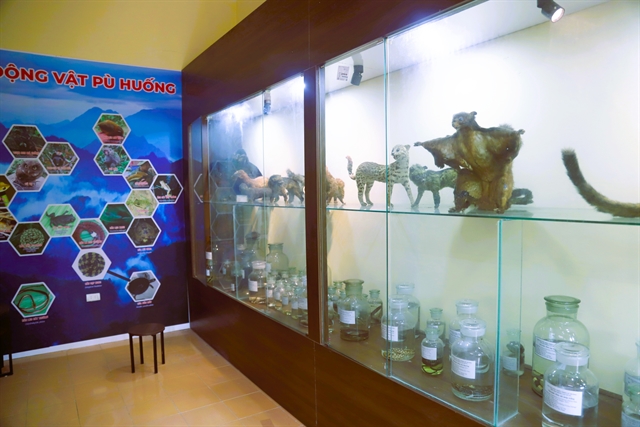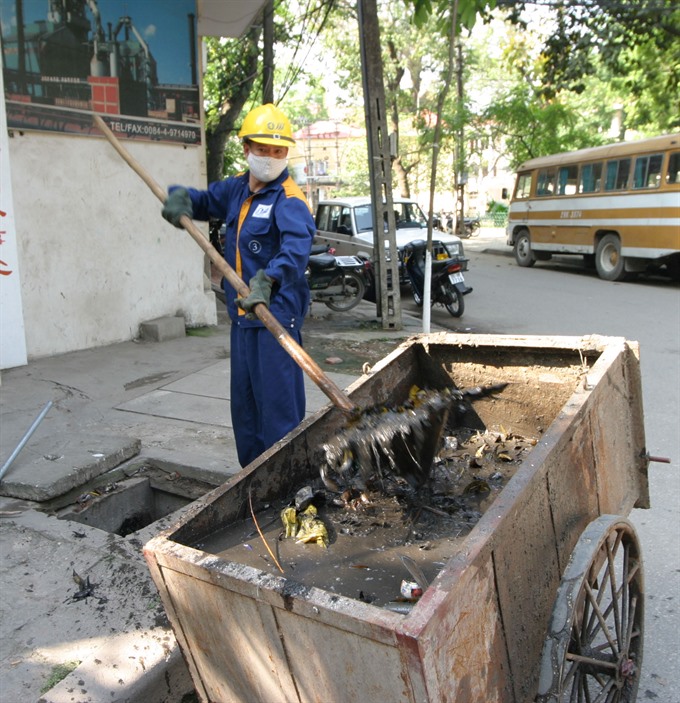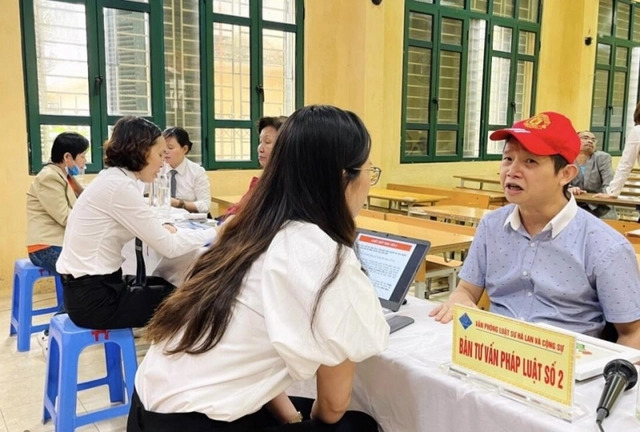 Environment
Environment

Whenever it rains heavily, people in Hà Nội think about flooding, and for good reason. Flooding occurred because of high density of construction in the city’s inner districts and an improperly-managed sewage system.
 |
| An environmental worker collects mud from a sewer on Đầm Trấu Street in Hà Nội. — VNS Photo Trương Vị |
HÀ NỘI — Whenever it rains heavily, people in Hà Nội think about flooding, and for good reason.
A downpour which brings about 50-100mm of water during a two-hour period likely causes flooding in at least 15 areas in the city, said director of the city’s Department of Agriculture and Rural Development Chu Phú Mỹ.
"Flooding occurred because of high density of construction in the city’s inner districts and an improperly-managed sewage system, with pumping stations in the city unable to meet drainage demand during heavy rain," Mỹ said.
In a workshop on sewage and wastewater treatment technology held in Hà Nội yesterday, vice director of the city’s Department of Construction Hoàng Cao Thắng said that the seven wastewater treatment stations operating in the city could deal with about 270,000cu.m daily, meeting just 22 per cent of the city’s wastewater treatment demand.
According to the construction department, the city faced other problems relating to water drainage and wastewater treatment such as polluted surface water of rivers and lake, a lack of atlas data on drainage systems and wastewater treatment.
The sewage system in the city crosses other underground works like electricity/tap water and telecommunication services.
Mud dredged from wastewater treatment plants, sewers and lakes and rivers’ beds was all dumped, harming the environment.
Thắng said that for years, Hà Nội has called for investment for its sewage and wastewater treatment, especially via official development assistance (ODA) or Public-Private Partnership (PPP) investment projects.
In this area, he said, Japan was a partner that helped the city much.
Japan’s ODA was spent on projects including Yên Xá wastewater treatment plant and a garbage collection system in Thanh Trì District, a water drainage system in the Tô Lịch River basin, embankments along the Tô Lịch, Lừ, Sét and Kim Ngưu rivers as well as sewers in the inner city.
Between 2013 and 2015, the city’s Department of Construction and Japan’s Department of Innovation Management and Environmental Sciences of Yokohama City joined the first phase of a project improving capacity building for sewage management in Hà Nội.
Under this phase, Japan’s Yokohama Water Ltd Company under Yokohama City Waterworks Bureau assisted Hà Nội to improve capacity to deal with mud waste, identify problems relating to mud treatment and introduce advanced technology to tackle them.
The project’s second phase commenced last December and is expected to conclude in March, 2020 with total investment of about 60 million JPY (US$541,300).
It will cover the operation and maintenance of pilot wastewater treatment plants, mud treatment, mitigation of losses from floods in pilot areas and organisation of seminars with the co-operation of member firms from the Yokohama water enterprises’ association.
Hà Thanh Tùng, head of the project, said the project will also help Hà Nội develop effective mud treatment plans and solutions to mitigate damage caused by flooding.
The city is also recommended to develop a Geographic Information System map database on its sewage to provide an overview of its sewage system and then.
Nomura Norikiko, head of Department of Innovation Management and Environmental Sciences of Yokohama City, said Yokohama was one of few cities in the world that developed its sewage system quickly since the 1970s to improve living conditions.
“Green space and lake/river with clean water are evidences for our success in managing environment,” he said.
“Synchronised actions are needed to create good environment as well as to protect residents in cases of natural disasters, for example heavy rains," he said, adding that sustainable urban management required co-operation among government, organisations, businesses and schools. — VNS




.jpg)